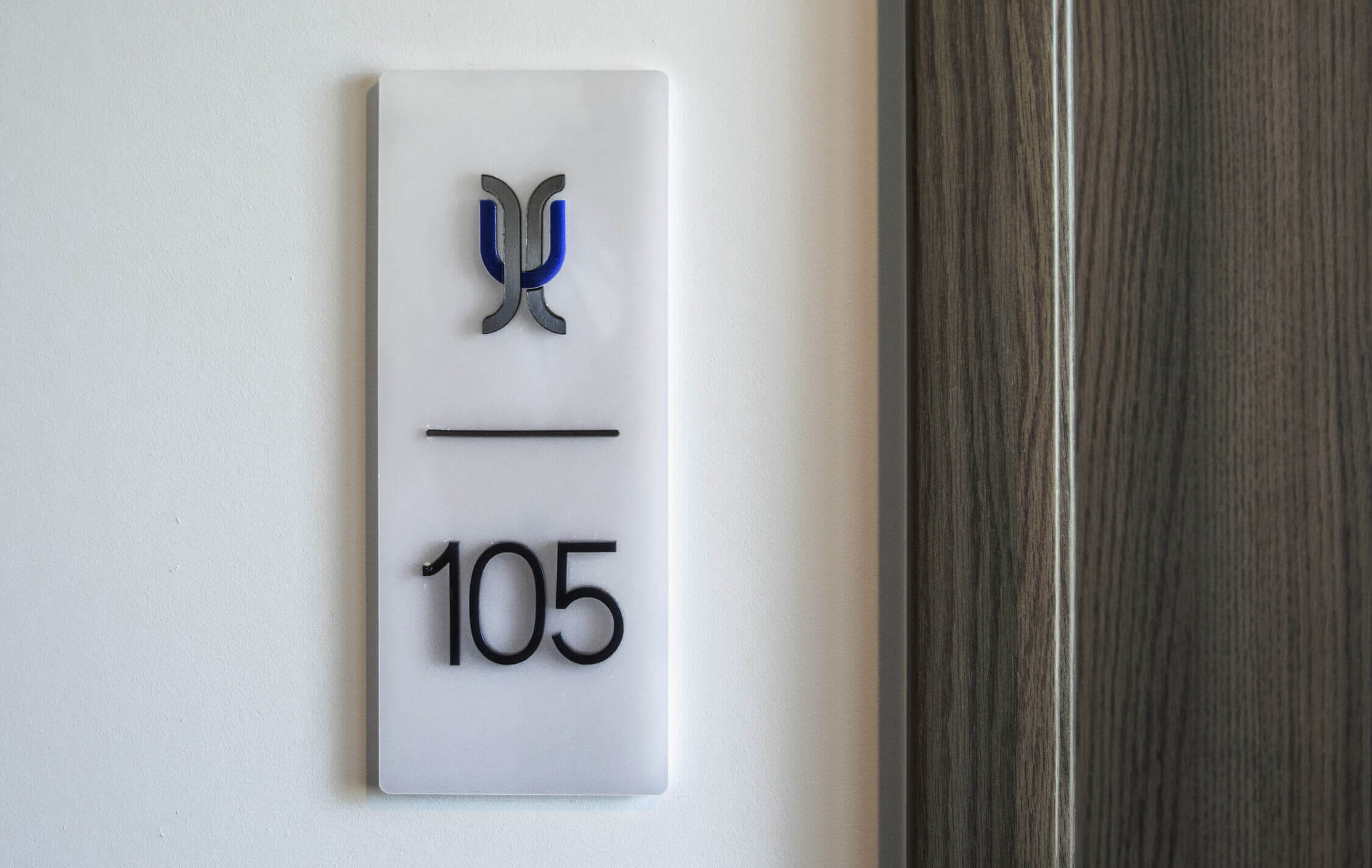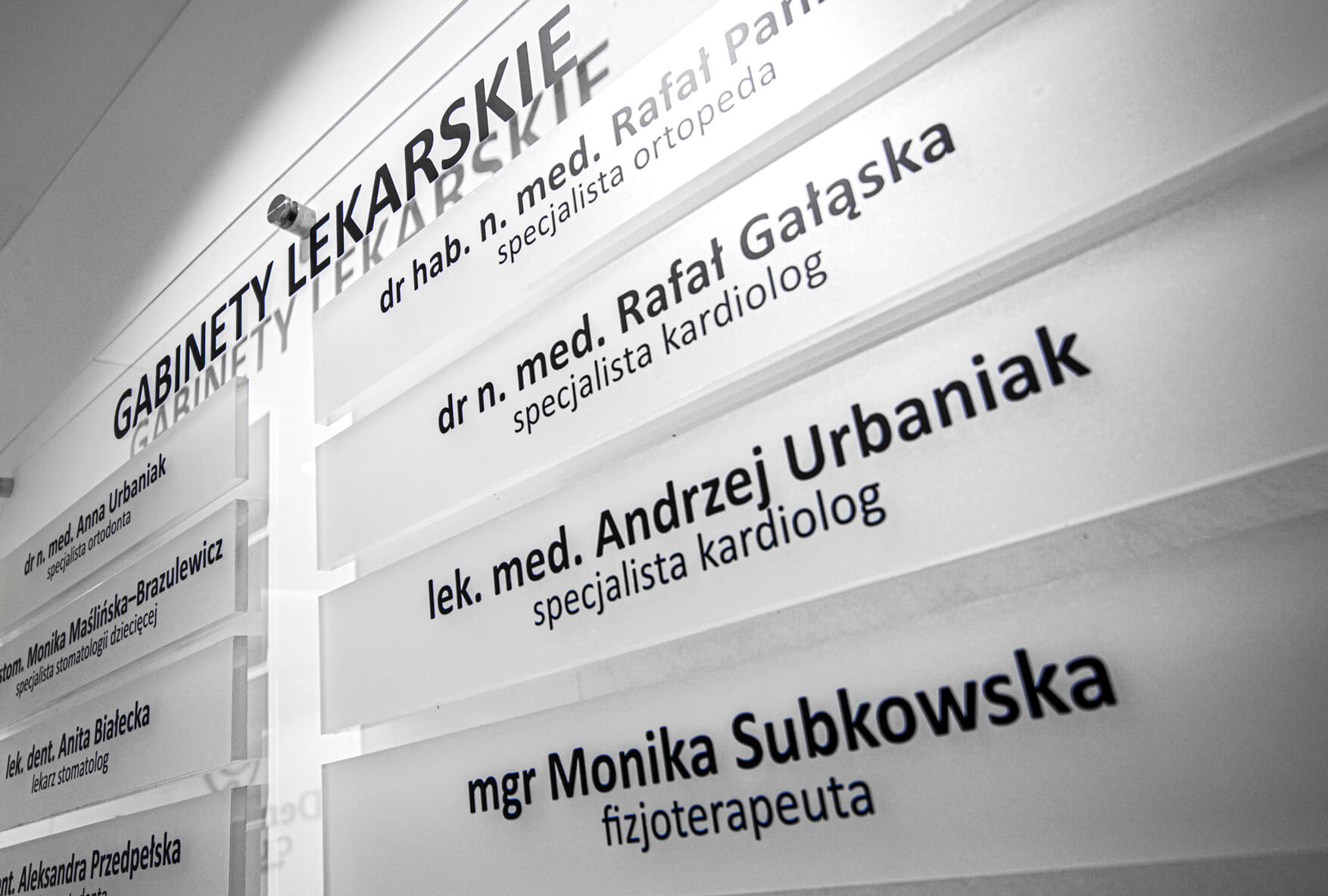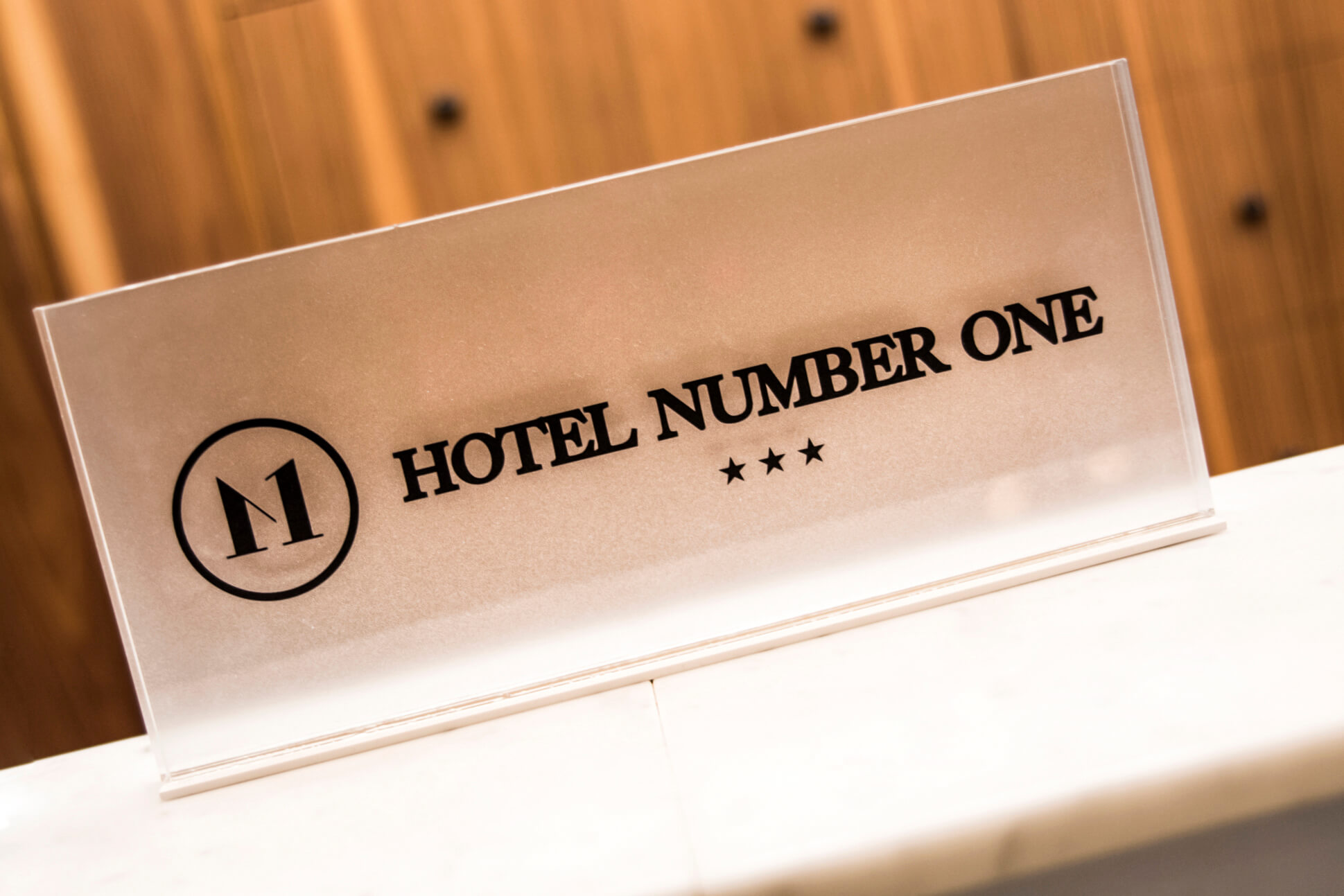Signage of residential buildings helps you find a property quickly and efficiently but it can also be a visual and eye-catching addition. In this article you will read how to correctly mark a residential building (and not only) and how to choose the right graphic elements. Guidelines for the marking of residential buildings can be found in the geodetic and cartographic law.
SIGNAGE OF RESIDENTIAL BUILDINGS - WHY IS IT WORTH DOING IT RIGHT?
Correct marking of a residential building is a convenience not only for family or friends, but also, above all, for emergency services, when in life or health threatening situations seconds count. Clear and visible marking of the building will make it easier for an ambulance or fire brigade to find it. A well-marked property is also a landmark for third parties who get lost or need help. It is worth remembering and immediately after receiving the decision on assigning the numbering - place it on the building, according to the relevant rules.

MARKING OF RESIDENTIAL BUILDINGS - RULES
The building number along with the name of the town or street should be mounted on the front of the property from the street or access road to the building. In the event that it is located deep inside the property, the marking must also be placed on the gate or fence. Designations of residential buildings should therefore:
● stand out from the facade (the material and colours play an important role here),
● be legible and visible from a distance (it is worth remembering about the appropriate size of markings);
● be visible after dark (backlight is necessary).
MARKING OF RESIDENTIAL BUILDINGS AND THEIR APPEARANCE
In addition to being distinctive in the background of the real estate, all markings should be selected so that they blend in with the architecture of the building, and even with the surroundings. If the idea of a single-family housing estate is to maintain cohesion with nature, and there are wooden inserts on the facade (pillars, shutters, etc.), you can consider elements made of the same material when marking. In modern buildings, metalwork will work, and in the case of historic tenement houses, rustic building markings will fit in. The choice of materials and solutions is huge, so it's worth matching them together. In creating a project related to the visual identification of buildings, an advisor will help, who will easily select the solutions best suited to a specific case.
MARKING OF THE APARTMENTS
The owner of an apartment building should take special care of accurate and legible marking. The building number, street name or proper name must be visible from a distance, regardless of the prevailing weather conditions. It is also worth focusing on a clear internal marking. In the lobby or at the reception, it is worth finding a place to put the general name of the entire facility, and in the corridors, precisely mark the directions of movement towards individual premises. It is also important to remember to mark elevators, communication routes, evacuation routes or storeys in staircases. These are minor elements, but it is worth taking care of them since they are a great help allowing users to easily move around the building.

MARKING OF PUBLIC BUILDINGS
Public utility buildings are places that should be particularly well marked. It is hard to imagine a visit to a clinic or hospital without descriptions of offices, rooms or entrances to individual buildings. It is a necessity and facilitates the functioning of both patients and specialists. The same applies to schools, universities, banks, museums and sports facilities. Although they will consist of different rooms, it is necessary to mark all of them in a very clear and, above all, in a logical way. All information boards should be made in the same style, possibly adapted to specific buildings. You can then designate individual colour or graphic elements that, on the one hand, would be consistent with the entire project, and on the other, would perfectly indicate where the user is.
In the case of public buildings, external markings are used, i.e.:
● property number and street name,
● proper name of the property,
● markings of individual entrances
● boards informing about which rooms or offices are located in particular places.
Internal labeling applies to:
● offices and study rooms,
● reception,
● check-in desk,
● halls,
● branches,
● conference rooms,
● toilets,
● elevators
● or storeys.
What these rooms will be depends on the purpose of the building. A good solution is also the marking of ground-floor sites. They will protect users and create a more intimate atmosphere, but also inform from the outside what is in individual premises.

HOTEL SIGNAGE
Hotels and tourist facilities should be visible from a distance. In this case, it is worth focusing on distinctive signage, totems, neon signs, Led letters and other elements related to light advertising. However, hotel facilities should especially take care of an internal, consistent style suited to the character and vision of the brand. In such places, you can not forget about marking the reception, restaurants, conference rooms, rooms for guests, playrooms, spas or swimming pools. Markings should be visible and legible, and guests should be able to easily find the location they are interested in after reading them. The entire creation must also take into account the principles of fire protection and occupational health and safety.
HOW DO WE WORK?
When creating a concept for marking residential buildings, public buildings or hotels, it is important to maintain logic and consistency. Properly selected and made elements have an informative function, but they are also an interesting element that visually enriches the property. Our specialists, thanks to many years of experience, pay great attention to every detail, but they are also able to match individual elements (materials, colours, design, size) so that they form a harmonious whole. In each project we carry out, we also mark the technology in which the markings will be made, and we coordinate the entire project and its implementation. We focus on quality and creativity, because we are aware that all elements of building marking must retain their unique appearance and long-term durability as long as possible.

.jpg%22%2C%22reception_hotel_tab_with_plexi_labeling_hotels_labeling_reception_information_hotel_tab_on_reception_tab_with_plexi_reception_hotel.jpg%22%2C%22room-numbers-room-numbering-room-numbers-behind-the-doors-apartment-labeling-room-identification-interior-floor-labeling.jpg%22%2C%22information_board_at_the_entry_signboard_information_at_the_entry.jpg%22.&w=3840&q=75)